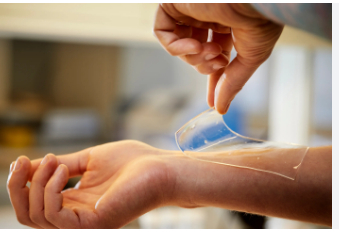
Hydrogel dressings are a sought-after selection in modern wound treatment because of their unique properties and benefits. They are specially made to provide a humid environment that aids in the natural healing process. Here’s everything you need to be aware of concerning hydrogel dressing.
What Are Hydrogel Dressings?
hydrogel brands are created from the same substance, a gel-like material that has an extremely high proportion of water. This composition allows them to absorb exudate from wounds (fluid) while also maintaining an opacity within the wound. They are usually employed to treat partial or full-thickness wounds such as burns, ulcers, as well as surgical wounds.
Benefits of Hydrogel Dressings
The retention of moisture is one of the main benefits that comes with hydrogel dressings is their capacity to maintain a moist wound environment. This moisture helps to promote the migration of cells and repair of tissues, which can accelerate the healing process and decrease scarring.
The hydrogel dressings can offer a cushioning impact, which helps in reducing pain and discomfort associated with wound treatment. It can also assist to soothe inflamed or irritated skin.
Debridement: These dressings facilitate autolytic debridement. This is a procedure which allows the body’s enzymes to take out dead tissue from the wound. This can help in preparing the wound’s surface for healing.
Reduced Infection Risk creating a barrier to prevent contamination, hydrogel dressings help to reduce the risk of infection. They also decrease the requirement for regular change of dressings. This can decrease the risk of infection.
When to Use Hydrogel Dressings
Hydrogel dressings are especially beneficial for wounds which are dry or with low to moderate exudate. They are ideal for wounds with necrotic tissue since they help dissolve dead tissue. However, they might not be suitable for heavily exuding wounds, or for wounds that have signs of infection, as excessive moisture could cause maceration (skin loss due to excessive moisture).
Application and Care
Applying an hydrogel dressing is easy. Cleanse the wound thoroughly, put on the hydrogel dressing, and fix it using either tape or a bandage, if required. Regularly monitoring is necessary to ensure that the dressing stays intact and the wound heals in a timely manner. In general, hydrogel dressings need to be replaced every 1-3 days, based on the quantity of exudate as well as the guidelines of the manufacturer.
Conclusion
Hydrogel dressings are an effective tool in wound management, offering numerous benefits that enhance healing and comfort. They are able to keep the environment moist, provide relief from pain and natural debridement make them a versatile choice for various types of wounds. But, as with any medical device, they must be applied based on the specific needs of the wound, and under the guidance by a health expert.

